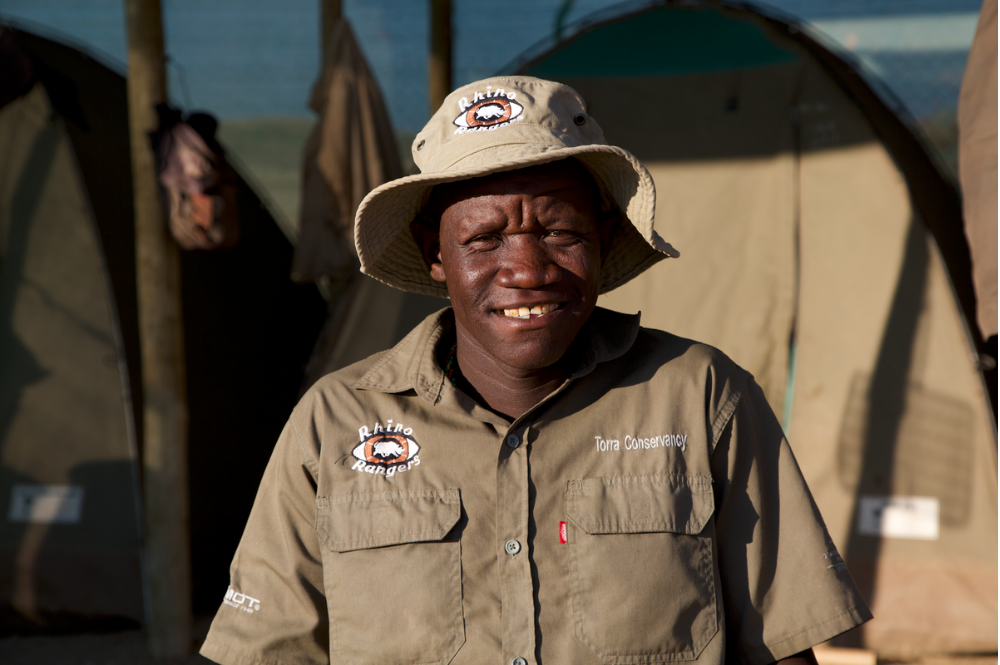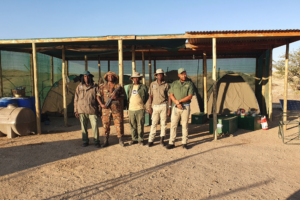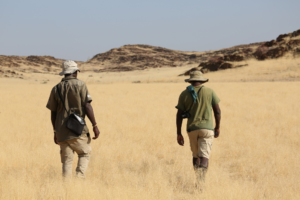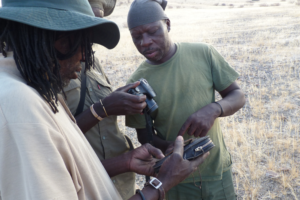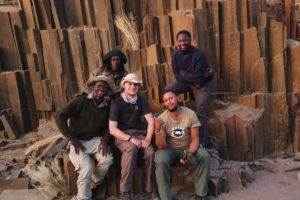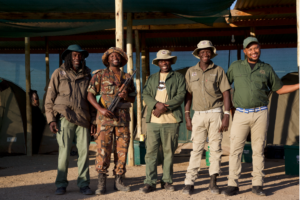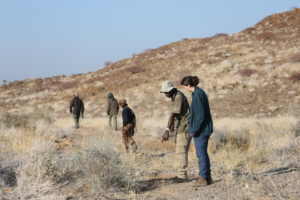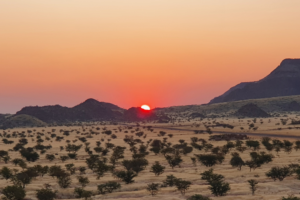Today marks Save the Rhino Trust Namibia’s (SRT) 40th anniversary. Since 1983, the Trust has been working alongside rangers in the Kunene region of Namibia to support rhino monitoring and protection. Most of the rangers are employed by local conservancies, and supported by SRT through training, resources and financial bonuses for their hard work to keep Kunene’s rhinos safe.
In August 2022, during a two-week field trip to learn more about rhinos in Namibia with SRT, two members of our team, Darion Moore and Jimmy Rutherford, were lucky enough to spend time with one of these Rhino Rangers, Mensley Karutjaiva. Mensley’s role, and the role of other Rangers supported by SRT, is crucial for rhino conservation in Kunene. His regular reports on individual rhino sightings (where he documents their health, behaviour, location and more), are vital for SRT to understand the trends in the Kunene rhino population. Yet, his job isn’t easy. Darion and Jimmy asked Mensley to share more about his work.
Name: Mensley Karutjaiva
Role: Rhino Ranger
Nationality: Namibian
Time in current role: Seven years
What is your daily routine like as a Rhino Ranger?
When on duty, I stay in a remote bush camp in the Kunene desert alongside one of my colleagues and a law enforcement officer. Every morning, I wake up at 6:30 am and set up my GPS. Then I go down to the waterhole to start my patrol. As soon as we see fresh tracks, we start tracking rhinos.
What difficulties do you face in your role?
The main challenge is wild animals. When you are tracking on foot, you might come across lions, scorpions, or snakes. Encountering them can be fatal.
We’re always extremely careful around rhinos too. For example, by staying downwind so that the rhino doesn’t catch our scent. If it does, it will do one of two things: charge or run away. Once, I saw a rhino’s footprints at the waterhole and we began to track. When we came closer to the bushes, we lost the tracks. Suddenly, I saw the rhino stand up and start coming towards us. There were no trees to hide up, and no stones to climb, so I decided to sit down. The rhino was already close to me, and it hit me on my side. My camera went flying one way and the GPS the other. With no other option, I froze. Thankfully, it moved on.
How long do you stay in the field?
When we are on patrol, we stay at the camp for 22 days. I miss my family, but I know that I need to bring food home for them, so I need to be out working. If I stayed at home, we’d have no bread on the table.
How does Save the Rhino Trust support you when you’re in the field?
For every kilometre that we walk, we receive some extra money, because the more you walk, the more rhinos you’re able to monitor. We also get diversity and photo bonuses for the rhinos we are tracking, making sure we find different rhinos and record their photos as much as possible. The bonuses are extremely helpful. We really appreciate the support from SRT. If we didn’t get the bonuses, our salaries would not be enough.
Why did you become a Rhino Ranger?
I want to protect animals for future generations to see. I don’t want to have to show them drawings, I want to be able to show them the animals in real life.
In SRT’s 40 years, a lot has changed in Namibia’s Kunene region. The black rhino population has significantly increased, and more communities are engaged with rhino conservation activities that benefit rhinos and people. Our huge congratulations to Save the Rhino Trust, and every Ranger that works to support Namibia’s black rhinos – thank you.
A version of this article was originally printed in our annual supporter magazine, The Horn.









